We truly hope that each of you greatly enjoy reading and learning from this article about 3 Rare North American Beetles. Each of them has a different story to tell, of course. The question that remains is who will listen, and fully appreciate the telling of it.
Obviously, these few represent only the tiniest percentage of the various beetle species that inhabit this region. We do, however, feel that these serve as a good place to start if one wishes to learn about such creatures. So, sit back, and let the edification begin!
Salt Creek Tiger Beetle
Salt Creek Tiger Beetle Facts
- Leading off this article about 3 Rare North American Beetles comes the astonishing species known appropriately as the Salt Creek Tiger Beetle.
- Though undeniably lengthy, the term for this fascinating invertebrate represents the common name for a remarkable invertebrate. Despite its length, that term actually remains more easily pronounced than that of the scientific name of the species.
- That’s because it bears the official name of the Cicindela nevadica lincolniana. By either of these tongue-twisting names, however, it has a singularly impressive story. Sadly, though, researchers still know very little about most of its life cycle.
- First identified as a separate species in the early 20th century, no real study of it occurred until the mid-1980’s. At that time, though, a local university undertook the task of making the first detailed study and survey of the creature and its population.
- Currently, its known population remains unknown, but totaled only 365 individuals in 2013. Despite this, the IUCN does not currently have a listing for the remarkable insect. It is, however, listed as Endangered by the country in which it appears.
- Given such scant numbers, the impressive Salt Creek Tiger Beetle must be considered to be facing many severe risks to is existence. Habitat loss remains a serious danger, of course. Its greatest, though, most likely consists of the effects of climate change.
Salt Creek Tiger Beetle Physical Description
While the awesome Salt Creek Tiger Beetle remains a highly remarkable species, it doesn’t hold that status due to its sheer physical size. In point of fact, this scientifically fascinating arthropod actually ranks as only a small-to-moderate sized form of beetle.
It does, though, like many of its kind, display a slight degree of the physiological characteristic of sexual dimorphism. In the case of this specific invertebrate, though, this trait manifests itself in terms of something other than size of coloring.
Males possess a thin covering of fine white hairs on the body and legs. Their female counterparts, however, completely lack this feature. In all other respects the genders appear virtually indistinguishable, with an appearance quite different from most related species.
Precise coloring of the Salt Creek Tiger Beetle varies between individuals. This mainly consists of shades of metallic brown to a dark olive green on the upper side. On the bottom, though, the creature generally displays a dark metallic green shade, but variations exist.
- Kingdom: Animalia
- Phylum: Arthropoda
- Class: Insecta
- Order: Coleoptera
- Family: Carabidae
- Genus: Cicindela
- Species: C. nevadica
Salt Creek Tiger Beetle Distribution, Habitat, and Ecology
Quite sadly, the amazing Salt Creek Tiger Beetle presently has an incredibly limited zone of habitation. In point of fact, all known specimens of this amazing insect appear in a tiny, and very specific, portion of the country of the United States, in North America.
More precisely, the entirety of its known range only includes one area in the norther third of a single county, in Nebraska. Despite intensive study in recent years, it remains unknown if its natural range ever extended much beyond parts of a neighboring county, if at all.
But even within this already incredibly limited area of habitation, it only appears in a few isolated locations. These consists solely of the banks of Salt Creek, and its associated streams and wetlands. This understandably serves as the source of the common name for it.
Among the limited data available on the aptly-named Salt Creek Tiger Beetle is information regarding its feeding habits. Regardless of its small size, the impressive insect represents a powerful carnivore, at least among insects within its own size range.
Given that, it tends to remain near its burrow, waiting to pounce on unsuspecting prey as it passes by. It seems to feed indiscriminately on any insect of sufficiently small size that comes within reach of the relatively powerful mandibles Nature provided it.
Individuals further appear to spend most of its roughly 2-year lifespan underground. It comes out for only around 6 weeks, from June to July each year. During this time it mates, and the female lays here eggs along sloping banks, in the salty mud of the region.
Coral Pink Sand Dune Beetle
Coral Pink Sand Dune Beetle Facts
- Next up among our choices for inclusion in this compendium of 3 Rare North American Beetles comes the distinctive one named the Coral Pink Sand Dune Beetle.
- This arthropod bears the descriptive, if lengthy, common name that also describes its habitat. That somewhat exhausting term currently represents its only recognized common name. It simply isn’t seen enough for alternate terms to come to mind.
- Scientists, however, know the species by its technical name. That’s the hard to pronounce term of Cicindela albissima. Researchers only recently discovered the awesome insect, in fact. As a result, it only received its technical name in 1962.
- Sadly, due to the combination of a highly limited range and small numbers, this insect lists as Critically Endangered with the IUCN. Estimates currently place the total current population of this spectacular invertebrate at fewer than 2,000 individuals.
- The Coral Pink sand Dune Beetle also spends the entirety of its life in one tiny area. Typically, this location consists of the same individual sand dune. The majority of individuals venture less than 1,000 ft (300 m) from where they hatched from their eggs.
- Given these factors, the potential of habitat loss understandably constitutes one of its greatest threats. Other dangers also obviously threaten the small insect, though. The ongoing effects of climate change no doubt rank at or near the top of this list.
Coral Pink Sand Dune Beetle Physical Description
Much as with many insects, the Coral Pink Sand Dune Beetle displays the principle of sexual dimorphism. In its case, females usually reach a larger size than males. Both genders remain tiny. That’s because an overall average body length measures less than 0.5 in (12 mm).
Although relatively small, the coloring of the magnificent creature remains rather striking. Also, the body generally appears as either brown or bronze in color. The upper thorax, furthermore, possesses a highly metallic sheen, making for a truly striking appearance.
While the wing cases of most individuals usually remain concealed, these appear as a brilliant white. The eyes also develop quite large, at least in comparison to other beetles of its size. In addition, the legs grow relatively long, to keep the body away from the hot sand.
Its most noteworthy feature, however, easily remains the presence of numerous bright white hairs. These fascinating features line much of the small body and legs. Researchers have theories as to the reason for this trait, but have reached no definitive conclusion.
- Kingdom: Animalia
- Phylum: Arthropoda
- Class: Insecta
- Order: Coleoptera
- Family: Carabidae
- Genus: Cicindela
- Species: C. albissima
Coral Pink Sand Dune Beetle Distribution, Habitat, and Ecology
The Coral Pink Sand Dune Beetle evolved as endemic to Utah, in the United States, in North America. Even more specifically, the species only inhabits the Coral Pink Sand Dunes geologic feature. This, quite understandably, serves as the source of the common name.
The color of the sand dunes it evolved as native to remains unique. It also forms the reason the invertebrate evolved its own distinctive coloring. With its limited numbers and highly restricted habitat, survival of every individual is of paramount importance to the species.
Mating usually occurs in the spring, and the larvae reach adulthood the following spring. The remarkable small creature also evolved as entirely carnivorous. Mature adults primarily prey upon flies and other small arthropods they can catch on the dunes.
Larvae remain in small burrows and feed on any small arthropod that wanders by. Yes, the primary threats to its existence include habitat loss due to climate change. But, the use of recreational vehicles such as buggies on the dunes also poses a severe threat.
Fortunately, its habitat lies within part of the Coral Pink Sand Dunes State Park. The use of buggies in the region the fabulous species inhabits has now been banned by the U.S. Fish and Wildlife Service. The impact of this on its numbers remains undetermined at this time.
American Burying Beetle
American Burying Beetle Facts
- Closing out this listing of 3 Rare North American Beetles is the fascinating species that bears the informative name of the American Burying Beetle.
- The term for this beetle serves as the most frequently used common name for this remarkable insect. It also goes by the alternate name of the giant carrion beetle. Both remain much more pronounceable name than its scientific name, though.
- That’s the tongue-twisting term of the Nicrophorus americanus. The French entomologist, Guillaume-Antoine Olivier made the first recognition of it as a separate and distinct species. This scientifically notable action took place in the year 1790.
- This truly fascinating invertebrate stands out from its many peers. It further does so due to a combination of several reasons. Unfortunately, though, not all of them qualify as good. It nevertheless remains a fascinating work of Nature and evolution.
- This creature remains known among researchers for its approach to parenting. That’s because it represents one of the few known varieties of beetle to actually display parental care for the offspring. The vast majority of related species do not.
- Sadly, it also deserves attention for another regrettable fact. That’s because of the fact that it continues to rapidly disappear in the wild. Its endemic range once covered much of North America. But now, it only inhabits a tiny fraction of its former range.
- Due to its rapid and continued decline in population, the IUCN lists it as Critically Endangered. The American Burying Beetle faces many threats, including such factors as habitat loss and invasive species. Its greatest threat now consists of climate change.
American Burying Beetle Physical Description
Perhaps the most notable aspect of the visually impressive American Burying Beetle is its sheer size. That’s because this amazing invertebrate ranks as relatively large. In point of fact, it’s one of the largest of all known beetles in the range of the world in which it appears.
That’s because mature adults average an astonishing 1.5 in (3.8 cm) in length. It’s also surprising in the fact that this holds true for both genders. It also ranks as unusual because it displays no noticeable degree of sexual dimorphism, in size or outward appearance.
More precisely, the bodies of both genders predominantly appear as black in color. Most adult specimens also typically display two bright orange-red bands appear on each wing cover. These also usually possess a somewhat scalloped shape to their structure.
Yet another structure behind the head of the American Burying Beetle resembles a shield. This structure also usually appears as orange with black edges. Each antenna develops topped with a small patch of orange. The combined effect creates a very striking appearance.
- Kingdom: Animalia
- Phylum: Arthropoda
- Class: Insecta
- Order: Coleoptera
- Family: Silphidae
- Genus: Nicrophorus
- Species: N. americanus
American Burying Beetle Distribution, Habitat, and Ecology
Having evolved as native to North America, the American Burying Beetle once inhabited a vast territory. Now, however, that range has been drastically reduced. That’s because it only appears in five states, in the United States, and the Canadian province of Ontario.
This incredible beetle does appear to be able to adapt to numerous habitat types, however. As a result of this strong evolutionary advantage, specimens inhabit grasslands, prairies, forests, and scrubland. But, it does show a slight preference for regions of grassland.
The species apparently also has specific criteria for where it lives. That holds true due to the fact that evidence indicates that the availability of adequate carrion plays a greater role than does the nature of the environment. Food and hatching place above all other factors.
Much like most reasonably similar species, this insect evolved as entirely carnivorous. While it will attack prey if necessary, the arthropod prefers to feed almost exclusively on carrion. The ready availability of this resource also plays a key factor in its choice of habitats.
Males of the American Burying Beetle try to find a suitable carcass. This equals something around the size of a bird. Then they attract a mate. After mating, the pair buries the carcass, and the female lays eggs adjacent to it. Once the eggs hatch, both parents tend the young.
3 Rare North American Beetles
We sincerely hope that you have thoroughly enjoyed this article dealing with 3 Rare North American Beetles. These creatures serve a vital role in their respective ecosystems. Most of them, however, go almost completely unnoticed, at least for the most part.
Sadly, though, each of these three now finds themselves facing grave threats to their continued existence. That, however, holds true for untold numbers of related species around the world, as well. It’s up to each of us to protect and preserve them for the future.
Check out our other articles on 4 Wondrous United States Waterfalls, Earth’s Many Magical Moths, The Mighty Tornado, 6 Marine Apex Predators, 4 Bulgarian Geological Marvels
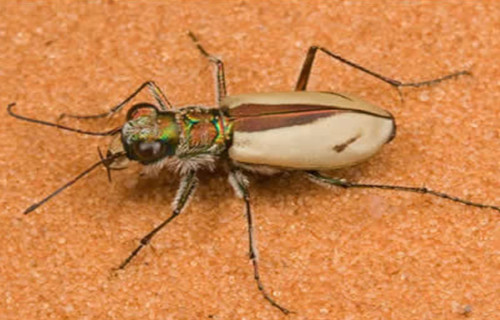
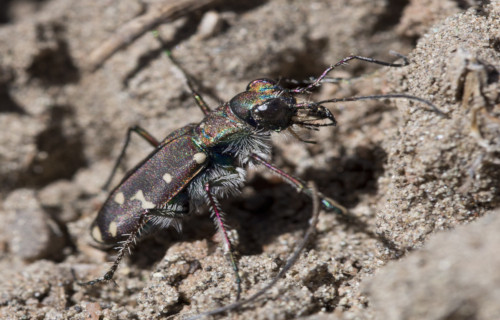
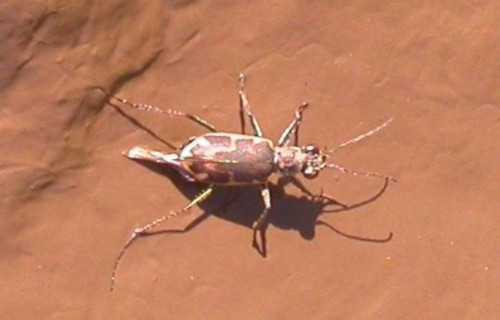
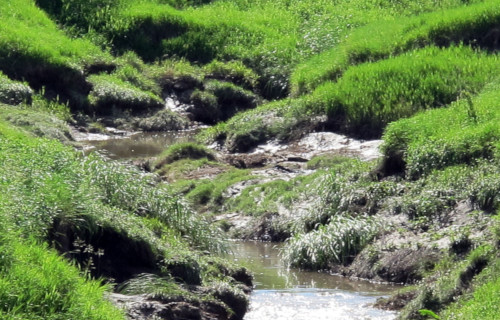
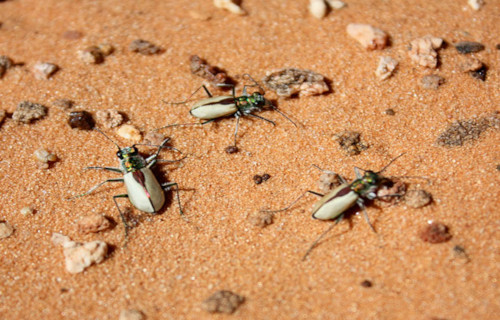
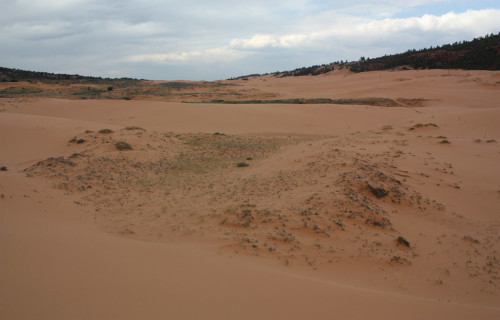
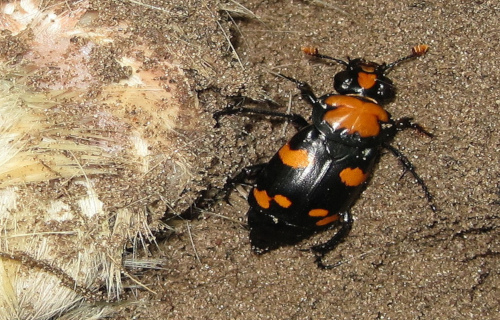
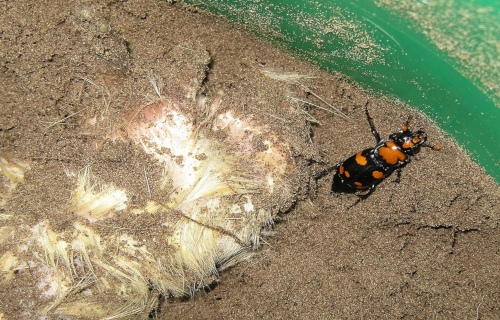
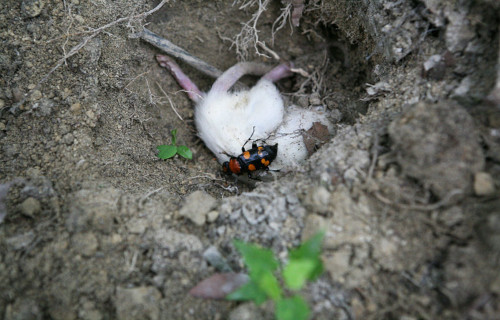









Leave a Reply